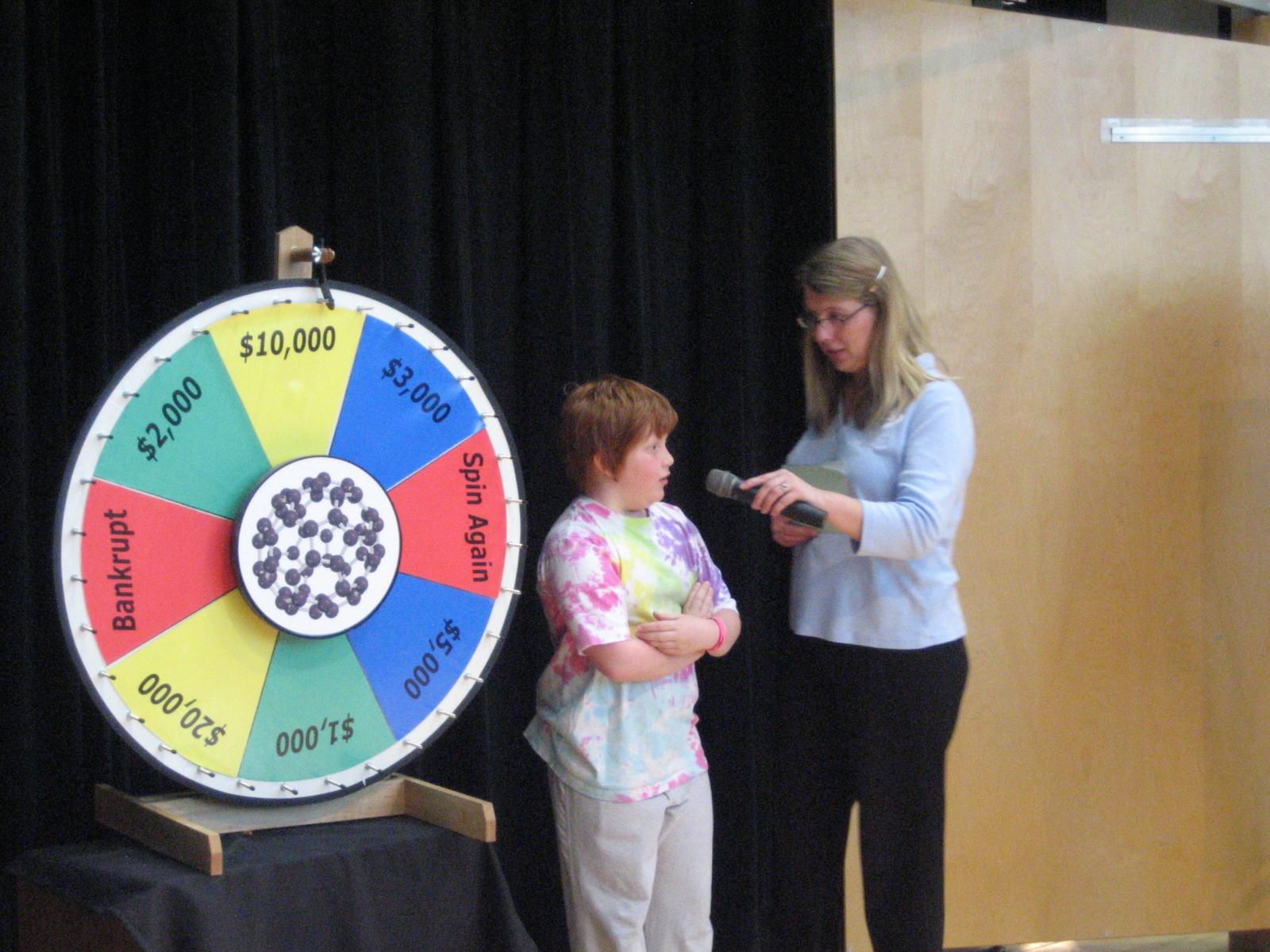DESCRIPTION
Museum visitors are contestants in a game show that encourages them to learn more about nanotechnology. The three rounds included here cover an introduction to nanotechnology; provide information on nanoparticle solar cells; and express the concerns people have for nanotechnology. New rounds of information can be plugged in as needed. The show is also designed to work with other hot topics, such as .....(genetically modified food, perhaps.) Other museums have used the title Wheel of Nanoscience.
DESCRIPTION
Museum visitors are contestants in a game show that encourages them to learn more about nanotechnology. The three rounds included here cover an introduction to nanotechnology; provide information on nanoparticle solar cells; and express the concerns people have for nanotechnology. New rounds of information can be plugged in as needed. The show is also designed to work with other hot topics, such as .....(genetically modified food, perhaps.) Other museums have used the title Wheel of Nanoscience.
TRAINING VIDEOS
OBJECTIVES
BIG IDEA
Nanotechnology is an emerging, rapidly developing field.
LEARNING GOALS
To encourage the visitor to learn more about nanotechnology.
To introduce the visitor to manufactured nanomaterials and how these products may already be affecting their lives.
To explain the importance of being informed about nanotechnology.
NANO CONTENT MAP
Nanometer-sized things are very small, and often behave differently than larger things do.
Scientists and engineers have formed the interdisciplinary field of nanotechnology by investigating properties and manipulating matter at the nanoscale.
Nanoscience, nanotechnology, and nanoengineering lead to new knowledge and innovations that weren't possible before.
Nanotechnologies—and their costs, utility, risks, and benefits—are closely interconnected with society and with our values.
Credits
Science Museum of Minnesota
Developed for the NISE Network with funding from the National Science Foundation under Award Numbers 0532536 and 0940143. Any opinions, findings, and conclusions or recommendations expressed in this product are those of the authors and do not necessarily reflect the views of the Foundation.
Creative Commons Attribution Non-Commercial Share Alike 3.0 United States (CC BY-NC-SA 3.0 US).
View more details

NISE Network products are developed through an iterative collaborative process that includes scientific review, peer review, and visitor evaluation in accordance with an inclusive audiences approach. Products are designed to be easily edited and adapted for different audiences under a Creative Commons Attribution Non-Commercial Share Alike license. To learn more, visit our Development Process page.

